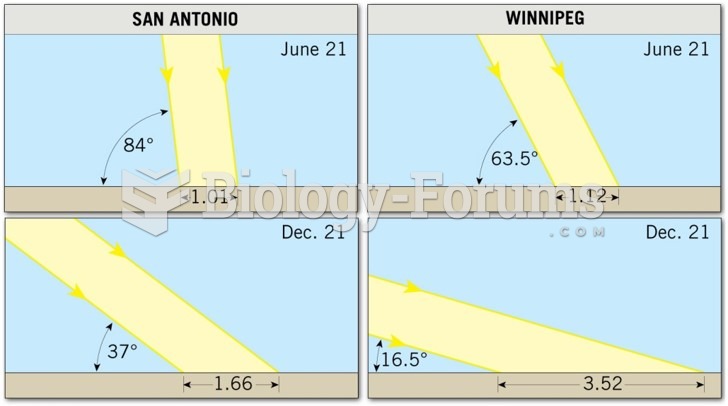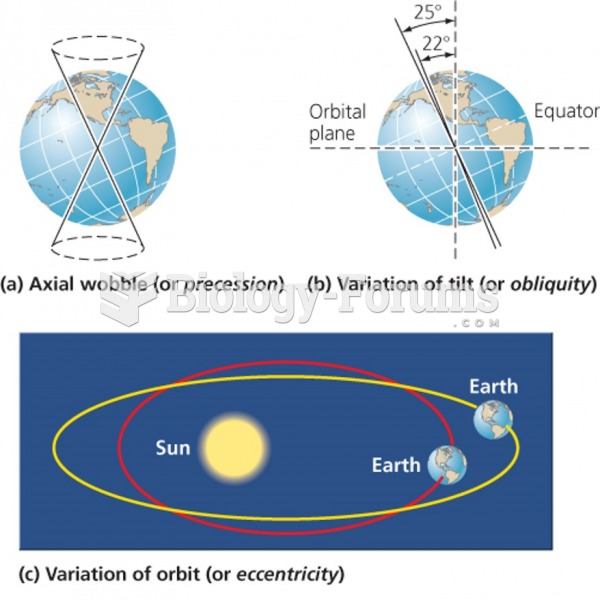Answer to Question 1
ANSWER: The first cycle deals with changes in the shape (eccentricity) of Earths orbit as Earth revolves about the Sun. To go from less elliptical to more elliptical and back again takes about 100,000 years. The greater the eccentricity of the orbit (that is, the more eccentric the orbit), the greater the variation in solar energy received by Earth between its closest and farthest approach to the Sun. The second cycle takes into account the fact that, as Earth rotates on its axis, it wobbles like a spinning top. This wobble, known as the precession of Earths axis, occurs in a cycle of about 23,000 years. This affects the strength of seasonal variations in climate. The third cycle takes about 41,000 years to complete and relates to the changes in tilt (obliquity) of Earth as it orbits the Sun. Presently, Earths orbital tilt is 23.5, but during the 41,000-year cycle the tilt varies from about 22 to 24.5. The smaller the tilt, the less seasonal variation there is between summer and winter in middle and high latitudes. Thus, winters tend to be milder and summers cooler. During the warmer winters, more snow would probably fall in polar regions due to the airs increased capacity for water vapor. And during the cooler summers, less snow would melt. As a consequence, the periods of smaller tilt would tend to promote the formation of glaciers in high latitudes.
Answer to Question 2
ANSWER: According to plate tectonics, the now existing continents were at one time joined together in a single huge continent, which broke apart. Its pieces slowly moved across the face of Earth, thus changing the distribution of continents and ocean basins. We find glacial features near sea level in Africa today, suggesting that the area underwent a period of glaciation hundreds of millions of years ago. Were temperatures at low elevations near the equator ever cold enough to produce ice sheets? Probably not. The ice sheets formed when this land mass was located at a much higher latitude. Over the many millions of years since then, the land has slowly moved to its present position. Along the same line, we can see how the fossil remains of tropical vegetation can be found under layers of ice in polar regions today.







